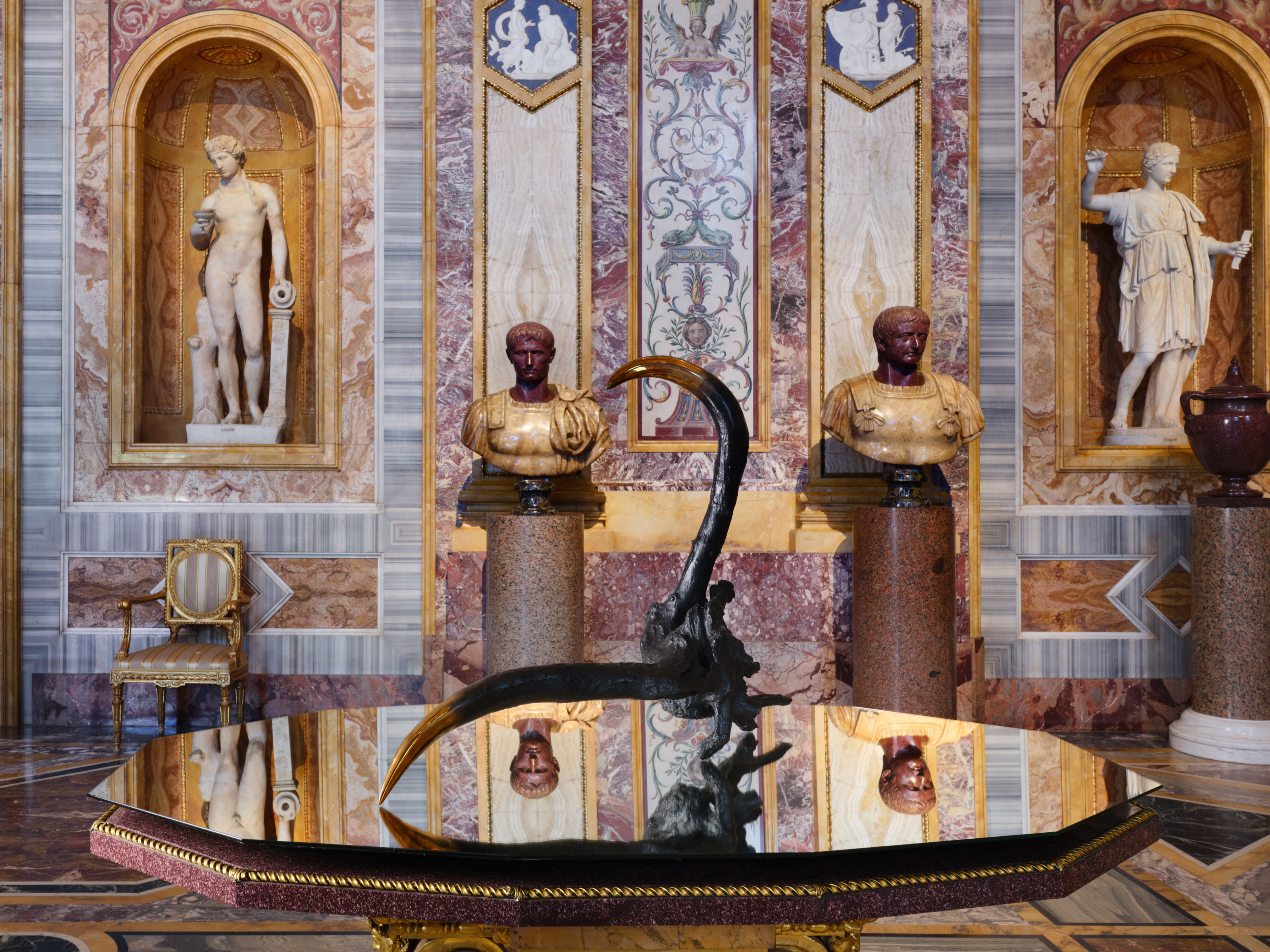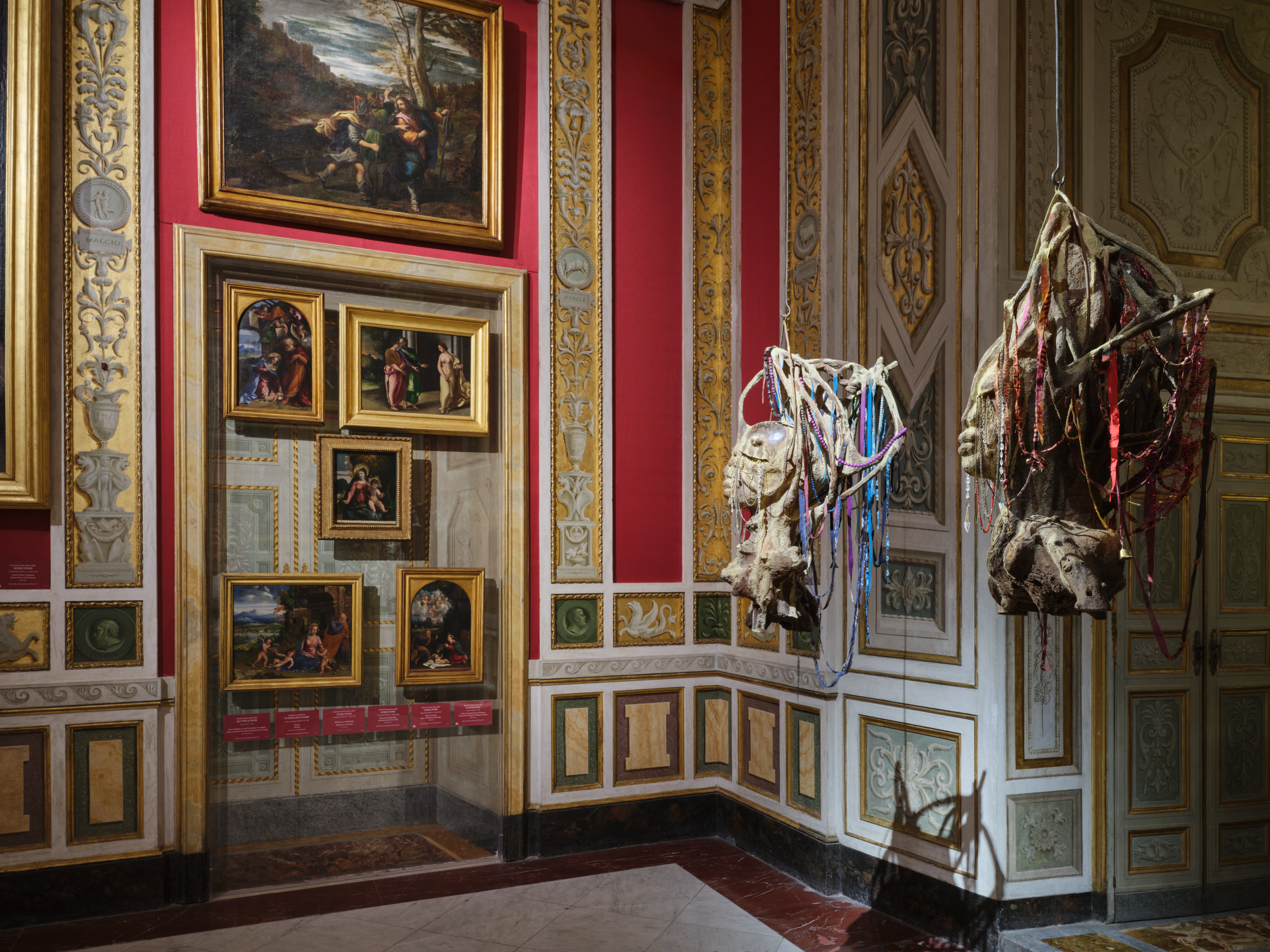Wangechi Mutu is now the first living female artist to exhibit at The Galleria Borghese, Rome with her new show Black Soil Poems.
The Galleria Borghese is a sumptuous proudly Roman 17th-century villa built for the Cardinal Scipione Caffarelli Borghese that today overflows with one of the world’s great art collections. Despite the museum’s centuries-old history and its holdings of masterworks by Caravaggio, Titian and Raphael, it had never exhibited work by a living female artist. Kenyan-American artist Wangechi Mutu is changing all of that with a new show, Black Soil Poems.
The exhibition displays surreal sculptures throughout the villa’s Baroque interiors and ignites some poignant conversations. Galleria Borghese’s director, Francesca Cappelletti had this to say, ‘We tend to think about the perfect beauty of the collection, Mutu’s work makes you think about its implications, and understand it in a very intuitive way.’

Visitors first discover the artist as they approach the villa to see two monumental bronze women guarding the entrance, with a lip plate and ritual markings. Inside, where Bernini’s Pluto is eternally abducting a desperate Proserpina under the blasé gaze of Roman emperors, Mutu’s Prayers draws the eye upwards. Hanging from the ceiling is a massive rosary made from wooden beads and dark red soil, humble materials that challenge the hierarchy of white Carrara marble.
Similarly, Suspended Playtime consists of balled-up plastic garbage bags hanging just above the ground. The installation references the resourcefulness of African children who make soccer balls and other toys from whatever is at hand. Swaying gently, it fills nearly the whole length of the salon, impossible to ignore.
Wangechi Mutu uses coffee grounds to write out a poem taken from Bob Marley’s song ‘War,’ based on a speech on racial injustice by Ethiopian emperor Haile Selassie. Coffee serves as a link between Ethiopia and Italy, as does a historical period of occupation. The work is titled The Grains of Words and is laid out on top of ancient Roman mosaics showing gladiators, who were often enslaved, in combat.

Cappelletti continued, ‘In the European tradition, subjects from ancient poetry, or Renaissance and Baroque poems, have always played a role in influencing artists making paintings and statues. Here, Mutu finds new sources of poetry that can relate to ancient cultures or contemporary ones.’ On the floor of another room, Mutu’s Bloody Rug is a silk carpet with swirling red stains. The curators chose to put it in the same room as Domenichino’s The Hunting of Diana which portrays the idealised beauty of the goddess and nymphs in an archery competition.
Parallels between Mutu’s work and the collection’s masterpieces are many. Her two Weeping Heads, created in 2025, have beads and ribbons spilling out of their eye sockets. The heads’ roots and branches might make others think of Bernini’s nearby Apollo and Daphne, the virgin turning into a laurel tree to escape the god’s unwanted advances. The exhibition extends into the Villa Borghese’s normally closed Secret Gardens. On the terrace, a stunning Black mermaid in bronze, Water Woman has webbed hands, a fish tail, pointy breasts and silky-smooth dark skin. Her elegant pose might remind you of Canova’s Paolina Borghese, reclining in white marble as Venus.
Black Soil Poems opened in June and will run until the 14th of September 2025 at Galleria Borghese, Rome. The exhibition is sponsored by Fendi.


